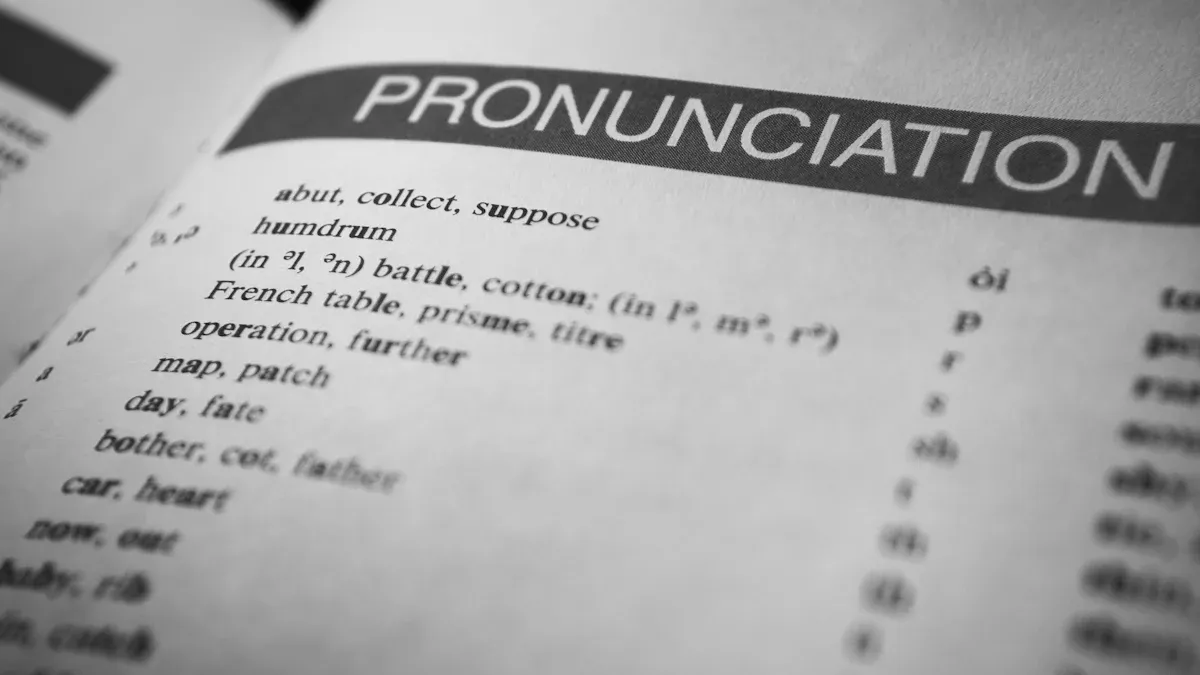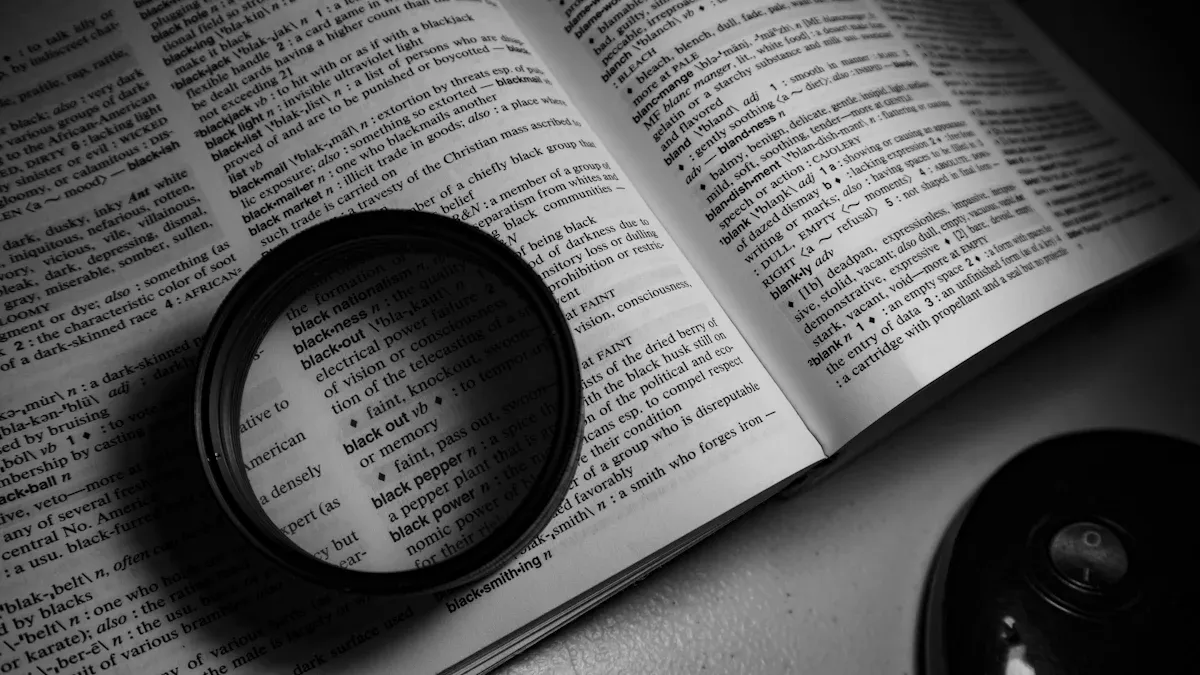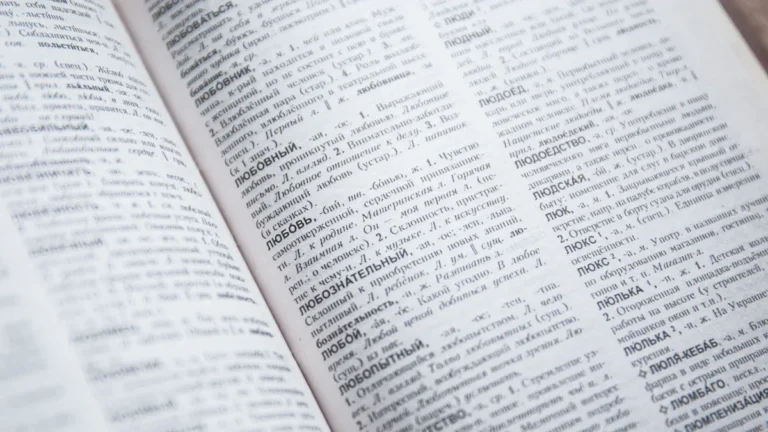
When exploring transliteration vs transcription, you encounter two distinct methods for handling language. Transliteration involves converting letters from one writing system to another, while transcription focuses on representing how words sound. Whether you’re reading a sign in a foreign country or pronouncing a new word at school, understanding the difference between transliteration vs transcription helps you choose the right approach to read or say words accurately in real life.
Key Takeaways
Transliteration changes letters from one alphabet to another. It keeps the word’s spelling close to the original.
Transcription shows how words sound with special symbols. This helps you say words the right way.
Use transliteration to read or write foreign names or places. You can also use it for words in your own alphabet.
Use transcription when you want to say a word out loud. It also helps you learn the right way to say it.
Transliteration helps with learning languages, research, and technology. It shows where words come from and what script they use.
Transcription helps with teaching languages, speech research, and technology. It shows how people say words.
You choose transliteration or transcription based on your goal. Do you want to read the word or say it?
Many language tools and apps use both methods together. This helps you read and say words the right way.
Transliteration vs Transcription
Definitions
You might ask how transliteration vs transcription are not the same. Transliteration changes letters from one writing system to another. For example, it turns Russian words in Cyrillic into Latin letters. This keeps the spelling close to the original script. Transcription shows how a word sounds. It uses letters or symbols to help you say the word. You can pronounce the word even if you do not know the language.
Main Focus
Transliteration vs transcription have different goals. Transliteration cares about how words look when written. It lets you read or write words from another language using your own alphabet. You see the word as it looks in the original, but with new letters. Transcription cares about how words sound. It helps you say the word the right way. You hear the word as it is spoken, not just see the spelling.
Tip: Use transliteration if you want to read a foreign name or place. Use transcription if you want to say it out loud.
Key Features
There are special features that make transliteration vs transcription different. Transliteration matches each letter or group of letters from one script to another. It does not always tell you how to say the word. For example, the Russian name “Дмитрий” becomes “Dmitriy” in English letters. The spelling is the same, but you may not know how to say it.
Transcription uses special symbols, like those in the International Phonetic Alphabet (IPA), to show the exact sounds. For example, “Дмитрий” can be written as [ˈdmʲitrʲɪj] to show how to say it. This helps people who are learning languages, traveling, or doing research and need to speak words from other languages.
A recent study with bilingual translators showed that transliteration vs transcription is more than just changing letters or sounds. Translators use their own culture and ideas when they work. They are not just language experts, but also cultural guides. Their choices can change how you understand a word or phrase. This means both transliteration and transcription need careful thinking, especially in research or when sharing information between cultures.
Feature | Transliteration | Transcription |
|---|---|---|
Focus | Written form (script) | Spoken form (sound) |
Output | New script, same spelling | Symbols for pronunciation |
Main Use | Reading, writing, names | Speaking, pronunciation |
Example | Дмитрий → Dmitriy | Дмитрий → [ˈdmʲitrʲɪj] |
You can see that transliteration vs transcription are used for different things. When you pick one, think about if you want to read or say the word. This choice is important in language learning, travel, and research, where being correct and clear matters.
Transliteration

What Is Transliteration
Transliteration lets you write words in a new alphabet. You do not change what the word means or how it sounds. You only change the letters you use. For example, you can take a word in Cyrillic and write it with Latin letters. This helps you see the word in a different script. The spelling stays almost the same as the original. Transliteration does not help you say the word. It just shows you how to write it with other letters.
How It Works
Transliteration matches each letter or group of letters to new ones. You follow special rules to do this. These rules help keep the word looking like the original. For example, the Russian word “Москва” becomes “Moskva” in Latin letters. Each Russian letter gets a matching Latin letter. You do not try to guess how to say the word. You only care about how it looks.
Some languages have their own transliteration systems. Thai uses a system based on Indic scripts. This system adds marks for sounds that are only in Thai. Sometimes, a letter has an underline to show a special Thai sound. Thai vowels can use special pairs, like <เ า> as “eā” or <เ ิ> as “ei.” These rules help keep the spelling and history of the word. In Chinese, transliteration can show old dialects. For example, the Jiang-Huai dialect keeps a fifth tone from Middle Chinese. Transliteration helps you see these old features in today’s writing.
Uses
You use transliteration in many ways in real life. Here are some examples:
Romanization: You change words from scripts like Cyrillic, Thai, or Chinese into Latin letters. This helps people read names, places, or words in English or other languages that use Latin letters.
Etymology: Transliteration helps you see where a word came from. You can track how a word changed over time.
Language learning: You can read foreign words in your own alphabet. This makes learning new languages easier.
Research: Transliteration lets you compare words from different languages. You can find patterns and links between them.
Technology: Computers use transliteration to show and work with text from many languages.
Transliteration shows not just the letters but also special parts of a language. In Thai, special marks and vowel pairs show sounds and tones from different places. In Chinese, transliteration keeps old sounds and tones. This helps you learn about the language’s history.
Transliteration lets you write and study words from other languages. You keep the spelling and look of the word, even when you use a new alphabet.
Transcription
What Is Transcription
Transcription lets you write down how words sound. You use it when you want to show the way a word is spoken. You do not just copy the letters from another alphabet. Instead, you listen and write the sounds you hear. This makes it easier to say words from any language. You do not need to know the original writing. You often find transcription in language books, dictionaries, and apps. When you use transcription, you pay attention to how people really say words.
Note: Transcription helps you read and say words right, even if you have never seen them before.
Types of Transcription
There are different kinds of transcription. Each one helps in its own way. The two main types are phonetic and phonemic transcription.
Phonetic
Phonetic transcription shows every sound in a word. You use special symbols, like those in the International Phonetic Alphabet (IPA). These symbols help you write each sound you hear. This type gives you a very detailed guide for saying a word. For example, the word “think” is written as [θɪŋk] in phonetic transcription. You can see every sound, even small ones that change with accents.
Phonemic
Phonemic transcription is simpler. It only shows the main sounds that change a word’s meaning. You do not see every tiny sound, but you get enough to say the word right. For “think,” the phonemic transcription is /θɪŋk/. This type helps you focus on the important sounds and leaves out extra details.
Uses
You use transcription in many real-life ways. Language teachers use it to help students say words correctly. Researchers use it to study how people talk in different places and times. Technology companies use it to make speech tools and language apps.
Recent studies show transcription helps in many fields. For example, tools like the LENA system record and study how children talk. These tools help doctors and teachers learn how kids speak, even in different cultures or with special needs. But there are still some problems. Not all languages and cultures can use these tools yet. New technology and research can help make transcription better for everyone.
You can see how transcription helps in many areas by looking at this table:
Research Method | Real-World Application | Linguistic Communities / Contexts |
|---|---|---|
Conversation Analysis | Studying speech features like tone, word stress, pauses, and how people say words in daily life. | Many cultural and language groups in real conversations. |
Linguistic Ethnography | Watching how people use language in places like schools and jobs to learn about how they talk and act. | Different groups with focus on social rules and experiences. |
Corpus Linguistics | Counting and studying words in texts to see how people use language in emails, science, and talking. | Many language areas, including different regions and groups. |
Sociolinguistics & Historical Linguistics | Learning about language changes and group identity by looking at how people say words in different places and times. | Groups split by region, social group, and history. |
Applied Linguistics | Helping schools, doctors, and tech by studying how people talk and understand language. | Schools, healthcare, technology, and making new rules. |
Transcription helps you learn how people speak, learn, and connect in many languages and cultures. You can use it to get better at languages, do research, or make new technology.
Transcription vs. Transliteration
Key Differences
You might wonder how transcription and transliteration really differ. The main difference comes from what each method tries to show. Transliteration changes the letters from one script to another. You keep the spelling close to the original, but you use a new alphabet. Transcription shows you how a word sounds. You use special symbols or letters to help you say the word correctly.
Here is a simple table to help you see the differences:
Feature | Transliteration | Transcription |
|---|---|---|
Purpose | Show how to write a word | Show how to say a word |
Process | Change letters to new script | Change sounds to symbols |
Output | New script, same spelling | Symbols for pronunciation |
Example | Москва → Moskva | Москва → [mɐˈskva] |
Transliteration helps you read or write words from another language using your own alphabet. You see the word as it looks in the original, but with new letters. Transcription helps you say the word the right way. You hear the word as it is spoken, not just see the spelling.
Tip: If you want to know how to write a foreign name, use transliteration. If you want to know how to say it, use transcription.
When to Use Each
You need to choose the right method for your goal. If you want to read or write a word from another language, transliteration works best. You can use it for names, places, or when you need to keep the spelling close to the original. For example, when you see a Russian city name on a map, transliteration helps you read it in English letters.
If you want to say a word out loud, transcription is better. You use it when you need to learn the correct pronunciation. Language learners, singers, and travelers often use transcription. It helps you sound more natural when you speak a new language.
Here are some situations to help you decide:
You want to read a foreign name in your own alphabet: Choose transliteration.
You need to pronounce a word correctly: Choose transcription.
You are studying language history or etymology: Transliteration can help you see how words changed over time.
You are learning to speak a new language: Transcription helps you practice the right sounds.
Transcription vs. transliteration is an important choice. You can pick the best method by thinking about your goal. Do you want to write or say the word? Your answer will guide you.
Examples

Transliteration Examples
You often see transliteration when you read names or places from other languages. This process helps you write words from one script using the letters of another. Here are some clear examples:
Russian to English:
Москва → Moskva
You write the Russian city name “Москва” as “Moskva” in English letters. Each letter matches a sound, but you do not know how to say it just by looking.Борис → Boris
The Russian name “Борис” becomes “Boris” in English. You keep the spelling close to the original.
Arabic to English:
محمد → Muhammad
The Arabic name “محمد” is written as “Muhammad” in English. You see this name in many places, like news or sports.كتاب → kitab
The Arabic word “كتاب” (meaning “book”) becomes “kitab” in English letters.
Chinese to English (Pinyin):
北京 → Beijing
The Chinese city “北京” is written as “Beijing” using the Pinyin system. You can read the name, but you may not know the exact sound.
Transliteration helps you read foreign words in your own alphabet. You can recognize names, places, and even some common words.
Transcription Examples
Transcription shows you how to say words by breaking them into sounds. You use special symbols, like those in the International Phonetic Alphabet (IPA), to write each sound. This method helps you pronounce words correctly, even if you have never seen them before.
Let’s look at some practical examples:
English Words in IPA:
“Technology” → /tɛkˈnɒlədʒi/
You see each sound: /t/ (t), /ɛ/ (short e), /k/ (k), /n/ (n), /ɒ/ (short o), /l/ (l), /ə/ (unstressed vowel), /dʒ/ (j as in “judge”), and /i/ (short i). This breakdown shows you exactly how to say “technology.”“Butter” (American English) → /ˈbʌtər/
“Butter” in American English has a clear “r” sound at the end.
“Butter” (British English) → /ˈbʌtə/
In British English, the “r” is softer or missing.“Water” (American English) → /ˈwɔːtər/
“Water” (British English) → /ˈwɔːtə/
You notice the difference in the “r” sound.
Common Phrases:
“How are you?” (American English) → /haʊ ɑːr juː/
“How are you?” (British English) → /haʊ ə juː/
The phrase sounds different in each accent.
Mandarin Chinese:
你好 → nǐ hǎo (Pinyin, a type of transcription)
You say “nǐ hǎo” to greet someone in Mandarin. The marks show the tones, which are important in Chinese.
Transcription gives you the tools to say words the right way. You can see how sounds change in different accents or languages. This helps you speak more clearly and understand others better.
You can use transliteration to read foreign words and transcription to say them correctly. Both methods help you connect with new languages and cultures.
Applications
Language Learning
You use transliteration and transcription when learning new languages. Transliteration lets you read words from another script in your own alphabet. For example, you can read Chinese or Arabic words with Latin letters. This helps you remember new words and see where they come from. Transcription shows you how to say words the right way. You see the sounds written out, so you can practice saying them.
Recent studies show language learning apps work better with both methods. The LAMA-UT pipeline uses a special transcription system. It made 45% fewer mistakes than old models. This means you get better help with saying and spelling words. Multilingual speech models help you learn many languages, even with little data. The ATAIGI app uses transliteration to teach Taiwanese Hokkien. This language is endangered. People who used the app got better at the language and learned more about the culture. CLEAR-Command uses transcription to help people talk clearly. It also helps build trust in learning.
Tip: Use transliteration to read a word. Use transcription to say it.
Research
Transliteration and transcription are important in research. Researchers use them to study languages and share what they find. Transliteration lets you compare words from different languages. You can see how words change over time. Transcription helps you write down how people really talk. You can capture accents, tone, and special sounds.
Early translation in research helps you understand questions and data. This makes your results better.
Keeping notes on translation choices makes your work clear and honest.
Interpreters who know the context help you get the real meaning in studies.
Good transcription keeps technical words and speaker details correct. This is important for data analysis.
Human experts in transcription stop mistakes that could change your results.
Transcripts help everyone search and use spoken data. This includes people with hearing problems.
Outsourcing transcription saves time. You can focus on studying and writing.
Good transcripts follow academic rules. This makes them easy to use in reports.
You need both transliteration and transcription to keep your research strong. This is very important when you work with many languages.
Technology
Modern technology uses transliteration and transcription in smart ways. Speech recognition, language apps, and translation tools all use these methods. New AI models, like those in the Bland Babel system, use both methods together. They can handle speech in many languages at once. These systems can tell which language is being used. They can switch between languages and pick the right meaning for words that sound the same.
Streaming speech recognition uses deep learning to make transcripts faster and better.
Large language models can choose when to transliterate or transcribe. This makes mixed-language texts easy to read.
Real-time language ID gives instant feedback, even if people switch languages in one sentence.
Code-switching and homophone disambiguation keep transcripts clear and true to what was said.
Neural machine transliteration helps languages with few resources. This makes tech more fair for everyone.
You use these advances when you talk to voice assistants or use translation apps. The right mix of transliteration and transcription makes technology smarter and more useful for all.
You have learned that transliteration switches letters from one alphabet to another. Transcription tells you how words sound when spoken. This helps you read or say words from other languages the right way. Here is an easy way to remember:
Mnemonic: “Transliteration = Letters, Transcription = Sounds.”
Pick transliteration if you want to write a word. Use transcription if you need to say it out loud. This can help you in language classes, on trips, or when doing research. It makes your communication much clearer.
FAQ
What is the main goal of transliteration?
Transliteration lets you change letters from one alphabet to another. This helps you read or write words from other languages using your own letters. It does not help you know how to say the word.
How does transcription help with pronunciation?
Transcription shows you the sounds in a word. You see special symbols or letters that help you say the word right. This way, you can speak new words with the correct sounds.
Can you use transliteration and transcription together?
Yes, you can use both at the same time. Transliteration helps you read the word in your alphabet. Transcription helps you say the word out loud. Many language books and apps show both to help you learn faster.
Why do some names look different in English?
Names look different because people use different ways to transliterate. For example, “Beijing” and “Peking” come from the same Chinese word. The system you use changes how the name looks in English.
What is the International Phonetic Alphabet (IPA)?
The IPA is a group of symbols that show every sound people make when they talk. You use it to write words just as they sound. People learning languages and linguists use IPA to study and practice saying words.
Do all languages have a standard transliteration system?
Not every language has just one standard way to transliterate. Some languages, like Russian and Arabic, have more than one system. You might see different spellings for the same word depending on the system used.
Is transcription only for spoken language?
You mostly use transcription for spoken words. It helps you write down how people talk. Sometimes, you use it for songs, poems, or any text where saying the words matters.
How do I know which method to use?
If you want to write or read a word, use transliteration.
If you want to say a word, use transcription.
Think about what you need before you choose a method.
See Also
Convert MP3 Audio Files Into Accurate Text Transcriptions
Easily Transform Sound Into Text Using Transcript.lol Platform
Discover How AudioNotes.ai And TurboScribe Convert Voice To Text
Top Ten Innovative Methods To Use AI For Transcriptions
Comparing The Best iPhone Transcription Apps AudioPen And AudioNotes





